This is an Eval Central archive copy, find the original at evalacademy.com.
This article is rated as:


Evaluations of any size tend to need to adhere to budgets, whether for financial or human resourcing constraints. There are certain pitfalls that can quickly derail your budget. Where possible, it’s important to clarify these during project scoping (check out our article here). This article will guide you through some of the most common budget pitfalls to help you plan and support you to stay on budget throughout your evaluation.
Frequent meetings.
Meetings are part of any project and are important for building relationships, understanding context, getting buy-in, and gathering or sharing information. However, meetings, especially over a long period of time can quickly eat away at your budget. So how can you tell if you need to budget more money or time for meetings? Typically, the early stages of an evaluation for a simple project will need 2-6 meetings to set up the evaluation and develop data collection tools, then often monthly or quarterly touch base meetings. So, what clues suggest that meetings might take up more of your budget? Some things to watch out for include:
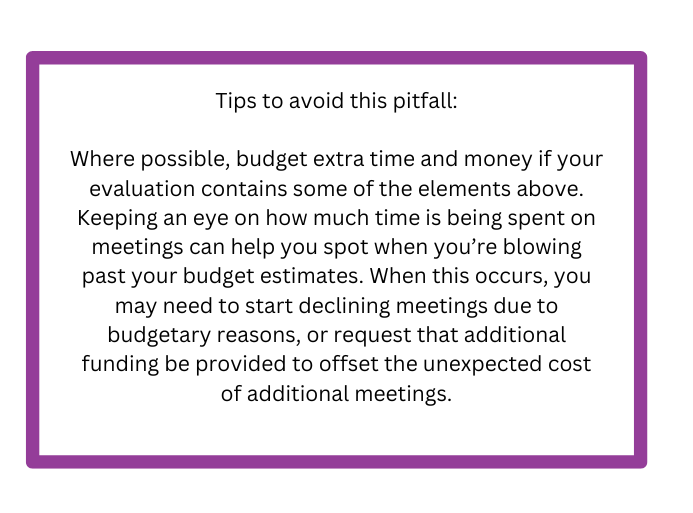
-
Many people or organizations involved
-
Participatory evaluation methods
-
Complex or rapidly changing projects
-
Or those with lots of detail or context
-
-
Projects that continue over a long period of time
-
Meetings that focus on the minutia, where lots of discussion is required, often go off track. This is not necessarily a bad thing, but if you notice a team likes to delve into deep discussions in meetings, they might take more time or you might need more meetings than you originally thought.
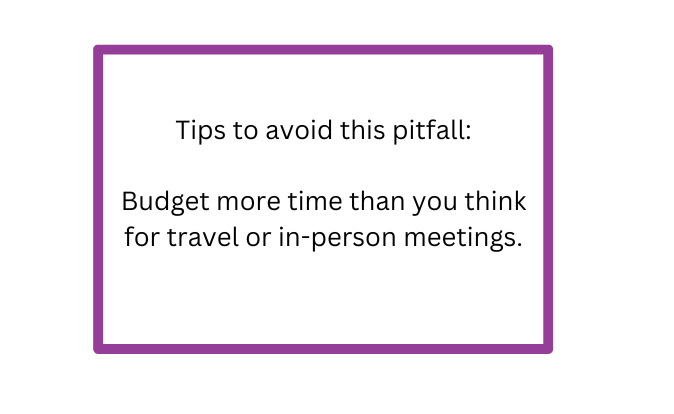
Travel.
While the shift to virtual meetings and a greater reliance on virtual tools can reduce your travel budget, there are certain things that are easier in person. Travel can quickly eat up your budget if you haven’t accounted for it fully. Mileage or car rentals, insurance, per diems, hotels, and even just the time to travel to a meeting, chat afterwards, and travel back can add up quickly. Typically for a virtual meeting, we budget time for 15+ min of prep or wrap up on either end of a meeting. Adding in travel and time to find parking can easily add an hour or more to that estimate.
Participant honorariums.
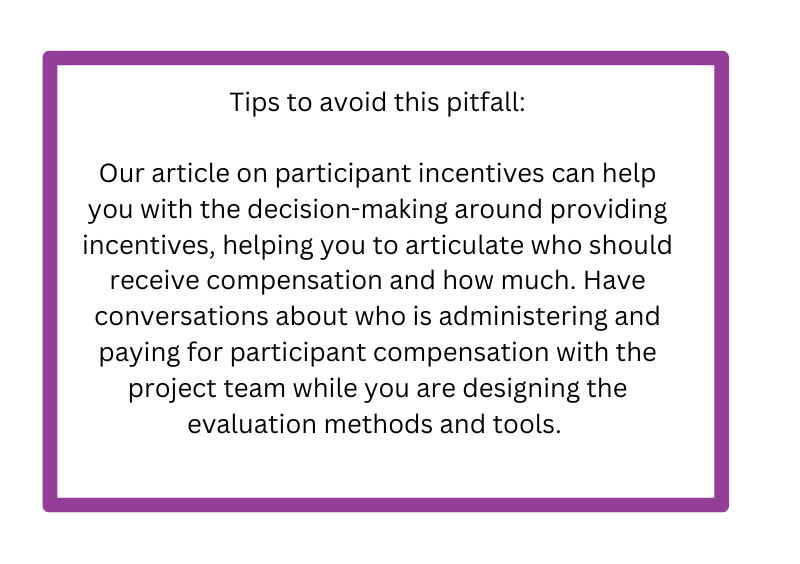
Valuing your participants’ time and knowledge is important, but it can be tricky to get it right. You may want to consider compensating participants for providing guidance, their time in meetings, answering surveys, participating in interviews or focus groups, or supporting data analyses. Make sure you check out what the going rate is for providing incentives or thank you’s to participants and who is responsible for footing that bill.
To learn more, check out our article: Incentives for participation in evaluation
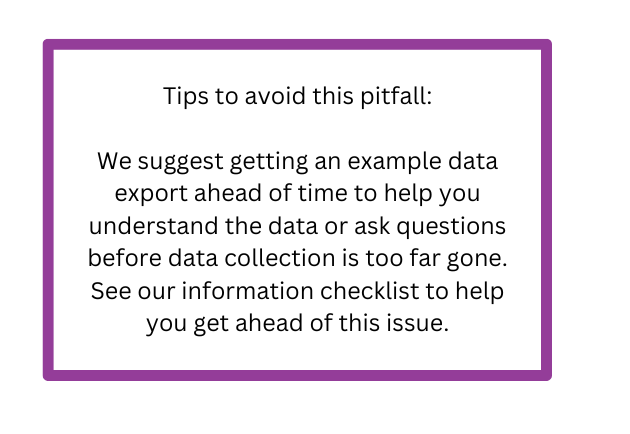
Administrative data analysis.
Administrative data can be a real doozy. Evaluations may rely on situations where we are using data collected by others or working within data collection systems (like electronic medical records, for example) where we don’t have much influence on how the data are collected or what the data export looks like. It’s tricky to estimate how long it will take to piece together disjointed data. Entering, cleaning, and understanding these data can quickly eat up a lot of time without you noticing.
To learn more, check out our article: New Checklist: Information request checklist
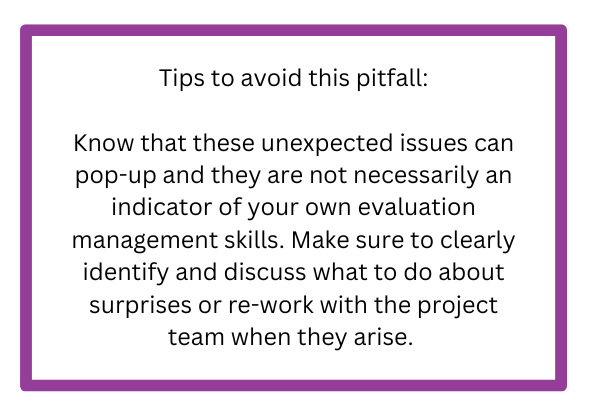
Surprises and re-work.
Ah, yes, the unpredictable joys of surprises, or re-work. In addition to data analysis taking up extra time, surprises like incomplete data sets or extra data that no one told you about can quickly throw your budget off track. Assumptions made during the data collection and analysis processes that aren’t clarified with the project team can lead you to re-do some of your analyses or sensemaking. And sometimes, key pieces of information can get lost or forgotten in translation, requiring you to re-do work that you’ve already done. Another surprise that can impact your budget is when timelines are condensed; in these cases, you may need to use more evaluators to get the work done quickly. More evaluators mean more project management time, including getting everyone up to speed and keeping them on the same page.
Endless report edits.
You know the ones. Often this happens when many stakeholder groups are involved, or the report sits for a long time before people provide feedback. Sometimes your report can get stuck in editing wars as people debate the use of the Oxford comma or wordsmith paragraphs ad infinitum.
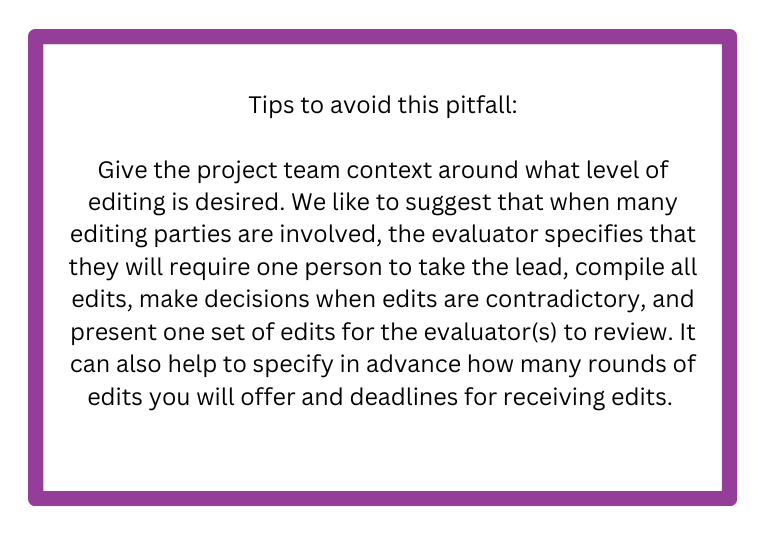
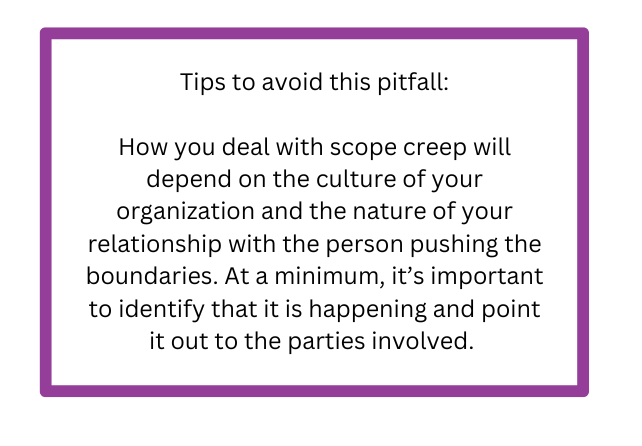
Scope Creep.
When I think about scope creep, I imagine some nefarious project manager demanding more work that’s outside of our contract or scope of agreement; however, scope creep often happens in a much more subtle and less evil way. Many times, scope creep just sort of happens, without either party necessarily realizing they are drifting outside the bounds of their agreement. Maybe you only budgeted for one report, but then the team realizes there’s an opportunity to present to leadership who will respond best to something tailored specifically to their interests. Or perhaps the project team realizes that the staff survey they’ve been running for years and forgot to mention when you were planning the evaluation might hold insights that could support your evaluation.
To learn more, check out our article: Scope Creep: When to indulge it and when to avoid it
At the end of the day, estimating an evaluation budget and then monitoring if you are on track are important parts of managing an evaluation. We’ve found that budget management can be more difficult for the smaller, “simple” projects as a lot of the items that can quickly derail your budget are project management issues, which are the same for small projects as they are for large ones. Where possible, it’s nice to add in a ‘contingencies’ line to a budget to give the evaluation some breathing room. By keeping an eye out for common issues that can derail your budget, you will be better prepared to identify and manage these issues.